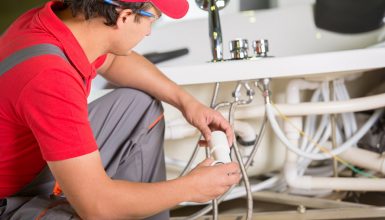The Handbook to Resolving Low Water Pressure in Your Home
The Handbook to Resolving Low Water Pressure in Your Home
Blog Article
How do you feel with regards to 4 Ways to Troubleshoot Low Water Pressure?

Low tide stress in your home can be a frustrating trouble, influencing whatever from bathing to cleaning dishes. If you're experiencing weak water circulation, there are several feasible causes and options to explore. In this overview, we'll discuss typical reasons for low water stress and useful actions to deal with the problem effectively.
Introduction to Low Tide Stress
Low tide pressure occurs when the circulation of water from your taps, showers, and various other components is weaker than normal. This can make everyday tasks more challenging and much less efficient. Understanding the sources of low water stress is important to discovering the ideal option.
Typical Reasons For Low Water Pressure
Faulty Pressure Regulators
Pressure regulators are accountable for preserving constant water pressure in your house. If they malfunction, it can cause low water pressure or irregular circulation throughout your home.
Municipal Water System Issues
Often, the issue exists outside your home. Local supply of water concerns, such as main line leaks or upkeep work, can momentarily minimize water stress in your area.
Pipeline Obstructions
In time, pipelines can become blocked with natural resource, sediment, or particles, limiting the flow of water. This is a typical concern in older homes with galvanized steel pipes.
Rust
Rust within pipelines can lead to leaks and minimized water stress. Corrosion accumulation can constrict water flow, especially in maturing plumbing systems.
Exactly How to Diagnose Low Tide Pressure
Inspecting Pipelines
Check visible pipelines for indicators of leakages, deterioration, or blockages. Pay attention to any type of unusual sounds, such as banging or rattling pipelines, which can indicate concerns within the plumbing system.
Consulting with a Plumber
If you're not able to pinpoint the reason for low tide stress, think about working with a professional plumber to carry out a detailed examination. They can identify underlying concerns and recommend ideal options.
Checking Taps and Fixtures
Begin by testing the water pressure at various faucets and components throughout your home. If the issue is isolated to details areas, it may show local problems.
DIY Solutions to Deal With Low Water Pressure
Flushing Water Heater
Debris build-up in the hot water heater can restrict flow and decrease effectiveness. Purging the container occasionally helps remove sediment and maintain optimal performance.
Checking Pressure Regulatory Authority
Ensure that the pressure regulatory authority is functioning properly. Readjusting or replacing the regulatory authority can help recover correct water stress throughout your home.
Cleansing Aerators and Showerheads
Mineral deposits can gather in aerators and showerheads, decreasing water circulation. Eliminate and cleanse these elements routinely to enhance water stress.
Clearing Up Clogs in Pipes
For minor clogs, attempt making use of a plumbing snake or chemical drain cleaner to clear blockages in pipes. Beware when using chemicals and follow security standards.
When to Call a Professional Plumber
If do it yourself initiatives fail to settle the issue or if you presume substantial plumbing problems, it's finest to look for assistance from an accredited plumber. They have the proficiency and tools to attend to intricate concerns safely and efficiently.
Safety Nets to Keep Water Pressure
Setting Up a Stress Booster
Consider installing a pressure booster pump to enhance water stress in areas with consistently reduced flow. This can be specifically valuable for multi-story homes or homes with high-demand fixtures.
Surveillance Water Use
Be mindful of water usage routines and prevent overtaxing the plumbing system. Simple changes, such as incredible showers and washing lots, can help keep adequate water stress.
Regular Upkeep
Arrange regular upkeep for your plumbing system to stop concerns such as deterioration, leakages, and blockages. Attending to minor issues early can assist prevent even more considerable repair services later on.
Verdict
Handling low water stress can be discouraging, but determining the underlying reasons and implementing ideal remedies can recover optimal circulation throughout your home. Whether it's cleaning up aerators, examining pipes, or consulting with a plumber, taking positive actions can ensure a steady supply of water for your day-to-day demands.
HOW TO FIX LOW WATER PRESSURE IN YOUR HOUSE (EXPERT GUIDE)
The morning shower lacking any real pressure? Bathtub taking hours to fill? Or maybe you’re dissatisfied with the inadequate performance from your combi boiler?
Then you, like millions of others across the UK, might be experiencing low water pressure.
Fortunately, the good news is that you don’t have to continue living this way. The cause of low water pressure in the home is often quite simple, and you may not even require a plumber to fix the problem.
What causes low water pressure in the house?
If you are experiencing issues with water pressure throughout your home, then you may have one of the problems outlined below.
Most of these problems can be fixed quite easily, but for others, you may need to contact a plumber.
Obstructed Shutoff Valve
If you’ve just bought a new home or recently had building work conducted on your property, there is a chance that your water valves were not fully opened.
If the water valve is partially closed, then you may be restricting the amount of water entering your home. To fix this, simply ensure the valve is fully open.
If the valve appears fully open but you are still encountering reduced water pressure, then the valve may be broken. If this is the case, do not under any circumstances try to fix it without proper training.
Often found under your kitchen sink, a water valve will usually look like a bright yellow handle.
Again, if you believe the water valve is broken, contact a plumber immediately.
Leaks in Your Water Pipes
Leaks are the worst-case scenario when it comes to low water pressure.
If the water pipes are damaged, then this will cause low water pressure, as not all the water will make it to your taps.
After you’ve checked to see if the valve is fully open, you can conduct a leak check of your home. Now, this may seem scary, but it is actually quite simple.
Clogged Water Pipes
Clogged water pipes are one of the most common causes of low water pressure.
These clogs usually build-up when your home is supplied water via iron pipes. Iron is particularly vulnerable to rusting which can then break off and cause an obstruction within your system. You also face the problem of things like dirt, gravel or sand entering creating mineral deposits which further block water flowing from the mains water supply.
Unfortunately, if you suspect that clogged pipes may be restricting your water supply, then you will need to contact a plumber.
In this situation, you will either need to have your pipes removed and cleaned or in more severe cases, you could require a new set of water pipes.
Designer Taps
Designer taps look fantastic, but are they built to be efficient in your plumbing system? Modern taps are built for modern homes and they often have lower flow rates that are specifically designed for use within high-pressure systems.
Install a Water Pressure Booster Pump
If the issue is simply that the mains water pressure supply is too low, the simplest fix is to invest in a booster pump. Found in homes of all shapes and sizes, booster pumps are a relatively cheap option to add extra pressure to your home.
Designed to increase water pressure by passing water into the pump from your mains supply and then ejecting it into your home water system at a higher pressure, a booster pump is a truly simple and effective solution to increasing water pressure.
https://www.anchorpumps.com/blog/the-plumbers-guide-to-fixing-low-water-pressure/

We hope you enjoyed reading our section about 9 Reasons for Low Water Pressure in Your House. Thanks a lot for spending some time to read through our piece. Liked our posting? Please share it. Let others locate it. We appreciate your readership.
Book Report this page